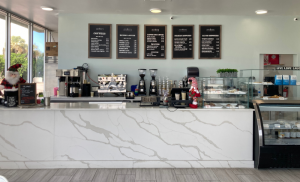Between two large hotels on the Virginia Beach boardwalk lies a quaint two-story house, white with green accents and roof. This is the de Witt Cottage, site of the Atlantic Wildfowl Heritage Museum.
The former home turned museum was built in 1895 and its website states that, “it is the oldest remaining private structure on the Virginia Beach oceanfront.” The structure’s builder, Bernard Peabody Holland, built it as a wedding gift to his wife, Emily. Bernard Holland would later become the first mayor of Virginia Beach, winning in 1909 and 1914. Emily Holland opened the community’s first library out of her husband’s hardware store. The de Witt family bought the house in 1909.
The de Witts consisted of Cornelius and Cecille, as well as their 10 children, three of whom were born in the parlor of the house which now serves as the museum’s gift shop. The family owned the property for over 65 years before the last remaining children sold the house to the city in 1988, with the condition to “ensure the Cottage would remain a landmark on the hotel lined oceanfront.” In 1991, the city approved the Atlantic Wildfowl Guild to use the cottage.
Four years later, in 1995, The Atlantic Wildfowl Heritage museum opened, displaying exhibits on decoys used in duck hunting as well as the history of the city in the early 20th century. The first floor of the museum is devoted to the wildfowl; carvings of ducks line the walls and displays of the area, all handmade. Many are antiques from the early 1900’s when Virginia Beach was a duck hunting tourist site. The upper level is a Virginia Beach history museum. It contains photographs and memorabilia spanning the 1920s to the ‘60s.
The Atlantic Wildfowl Heritage Museum is open Wednesday – Sunday, 10 a.m. to 5 p.m.
By Annie Phelps
saphelps@vwu.edu

